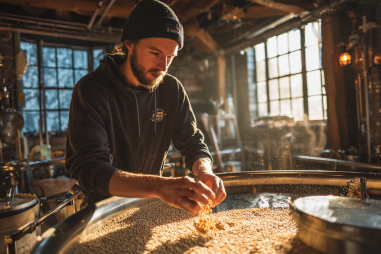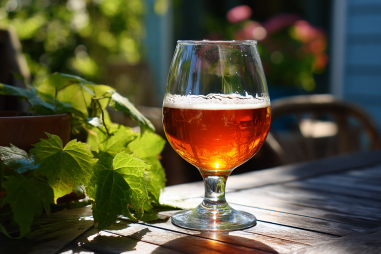Italian Pilsners offer a refreshing twist on the classic Pilsner style, blending crispness and subtle complexity in a way that sets them apart from their Czech and German cousins. Known for their balanced flavor profile, these beers have carved out a unique niche that appeals to drinkers who crave both refreshment and a nuanced taste experience. In this article, we’ll explore what makes Italian Pilsners special, breaking down their malt character, hop presence, yeast contributions, bitterness, mouthfeel, and ideal food pairings.
Introducing the Italian Pilsner Style
The Italian Pilsner style traces its roots to the traditional Pilsner lagers of Europe but adapts these foundations with a distinct Mediterranean flair. Unlike the heavier, malt-forward profiles of some German Pilsners or the fuller body of Czech varieties, Italian Pilsners showcase a lighter, more elegant interpretation. They typically feature a pale golden color and a bright, sparkling clarity that invites drinkers in with just a glance.
What makes this style particularly intriguing is its balance. Italian Pilsners are not overly bitter nor excessively sweet. Instead, they sit in a harmonious middle ground that emphasizes drinkability while still offering layers of flavor. Their popularity in Italy’s burgeoning craft beer scene reflects this appeal, providing a refreshing option suitable for warm climates and social settings.
Breaking Down Malt Characteristics
The malt backbone of an Italian Pilsner is subtle yet essential to its flavor profile. Brewers often use high-quality Pilsner malts that produce a clean, slightly sweet, and biscuity flavor. This mild malt foundation supports the hops without overpowering them, allowing for a crisp overall impression.
The malt flavor tends to be delicate, with gentle bread or cracker notes that provide just enough sweetness to round out the profile. This restrained malt character ensures that the beer remains light on the palate, making it an excellent choice for those who prefer a dry, refreshing lager without heaviness. The malt’s soft texture also contributes to the smooth mouthfeel typical of Italian Pilsners.
Hop Varieties and Their Impact on Flavor
Hopping is a key component that gives Italian Pilsners their distinctive character. While the exact hop varieties can vary by brewer, many Italian craft breweries favor European noble hops like Hallertau, Saaz, or Tettnang, which bring floral, herbal, and sometimes slightly spicy notes to the beer.
In some cases, local Italian hop varieties are incorporated, which can lend unique regional aromas and flavors. These might include notes of wildflowers, citrus peel, or subtle earthiness, contributing to the beer’s bright and sometimes crisp hop profile.
These hops contribute more nuanced flavors rather than aggressive bitterness. They often impart a floral bouquet and a mild herbal complexity, which complements the malt sweetness perfectly. The hop aroma is fresh and inviting without overshadowing the other elements.
Yeast Influence on Aroma and Taste
Yeast plays a vital but understated role in shaping the Italian Pilsner’s flavor. Typically, brewers use clean, lager yeast strains that ferment at cooler temperatures to produce a crisp and neutral palate.
This fermentation style minimizes the production of fruity esters or phenols, keeping the beer’s flavors bright and focused on malt and hops. However, some subtle yeast characteristics—such as a light graininess or a hint of minerality—can enhance the overall sensory experience.
Additionally, the clean yeast profile allows the beer to maintain exceptional clarity and sparkle, enhancing the refreshment quality and making it ideal for warm weather consumption.
Typical Bitterness and Mouthfeel
Italian Pilsners typically exhibit moderate bitterness that balances the malt sweetness without overwhelming the palate. The international bitterness units (IBU) usually range from 30 to 40, offering that signature nip that wakes up the taste buds while still feeling smooth and approachable.
The bitterness is crisp rather than harsh, often described as refreshing with a slightly dry finish that encourages another sip. This controlled bitterness helps to cut through the malt character and cleanse the palate.
Regarding mouthfeel, Italian Pilsners are usually light to medium-light in body with a smooth carbonation level that gives a gentle effervescence. This texture further contributes to the beer’s drinkability and makes it a perfect thirst quencher during hot days or social gatherings.
Pairing Italian Pilsners with Food
Thanks to their balanced flavor and refreshing nature, Italian Pilsners are incredibly versatile when it comes to food pairings. Their mild malt sweetness and moderate bitterness complement a wide range of dishes without overpowering the flavors.
Some ideal pairings include:
- Seafood: Think grilled shrimp, calamari, or light fish dishes where the beer’s crispness enhances the freshness of the sea.
- Italian cuisine: Light pasta with olive oil and herbs, bruschetta, or even thin-crust pizzas work beautifully with the subtle malt and floral hops.
- Salads and vegetables: Crisp greens with vinaigrettes or grilled vegetables benefit from the beer’s light body and moderate bitterness.
- Soft cheeses: Fresh mozzarella, ricotta, or goat cheese complement the smooth mouthfeel and restrained sweetness.
These pairings leverage the beer’s clean profile and subtle complexity to elevate dining experiences, making the Italian Pilsner a wonderful companion at the table.
Appreciating the Nuances of Italian Pilsners
Italian Pilsners occupy a special space in the world of lagers, combining traditional brewing techniques with regional ingredients and preferences to create something distinctive. Their subtle malt sweetness, gentle floral hops, clean yeast character, and balanced bitterness offer a multifaceted experience that appeals to both casual drinkers and aficionados alike.
Whether enjoyed on a sunny afternoon in Milan or paired elegantly with a Mediterranean meal, Italian Pilsners invite drinkers to appreciate the art of balance and the beauty of subtlety. Exploring their flavor profile is not only a sensory journey but also an insight into the craft beer culture flourishing in Italy today.







